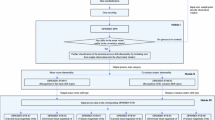Abstract
Since solely using statistical process control (SPC) and engineering process control (EPC) cannot optimally control the manufacturing process, lots of studies have been devoted to the integrated use of SPC and EPC. The majority of these studies have reported that the integrated approach has better performance than that by using only SPC or EPC. Almost all these studies have assumed that the assignable causes of process disturbance can be identified and removed by SPC techniques. However, these techniques are typically time-consuming and thus make the search hard to implement in practice. In this paper, the EPC and neural network scheme were integrated in identifying the assignable causes of the underlying disturbance. For finding the appropriate setup of the networks' parameters, such as the number of hidden nodes and the suitable input variables, the all-possible-regression selection procedure is applied. For comparison, two SPC charts, Shewhart and cumulative sum (Cusum) charts were also developed for the same data sets. As the results reveal, the proposed approaches outperform the other methods and the shift of disturbance can be identified successfully.
Similar content being viewed by others
References
Anderson, J. A. and Rosenfeld, E. (1988) Neurocomputing: Foundations of Research, MIT Press, Cambridge, MA.
Box, G. E. P. and Kramer, T. (1992) Statistical process monitoring and feedback adjustment\3-a discussion. Technometrics, 34, 251-285.
Box, G. E. P. and Luceo, A. (1997) Statistical Control by Monitoring and Feedback Adjustment, John Wiley and Sons, New York, NY.
Box, G. E. P., Coleman, D. E. and Baxley, R. V. (1997) A comparison of statistical process control and engineering process control. Journal of Quality Technology, 29, 128-130.
Box, G. E. P., Jenkins, G. M. and Reinsel, G. C. (1992) Time Series Analysis, Forecasting, and Control, 3rd Edn, Prentice-Hall, Englewood Cliffs, NJ.
Cheng, B. and Titterington, D. M. (1994) Neural networks: a review from a statistical perspective. Statistical Science, 9, 2-54.
Cheng, C. S. (1995) A multi-layer neural network model for detecting changes in the process mean. Computers and Industrial Engineering, 28, 51-61.
Cook, D. F. and Chiu, C. C. (1998) Using radial basis function neural networks to recognize shifts in correlated manufacturing process parameters. IIE Transactions, 30, 227-234.
Cybenko, G. (1989) Approximation by superpositions of a sigmoidal function. Mathematical Control Signal Systems, 2, 303-314.
Faltin, F. W., Hahn, G. J., Tucker, W. T. and Vander Wiel, S. A. (1993) Algorithmic statistical process control: some practical observations. International Statistical Review, 61, 67-80.
Haykin, S. S. (1994) Neural Networks: A Comprehensive Foundation, Macmillan, New York, NY.
Hecht-Nielsen, R. (1990) Neurocomputing, Addison-Wesley Publishing Company, Menlo Park, CA.
Hornik, K., Stinchcombe, M. and White, H. (1989) Multilayer feedforward networks are universal approximations. Neural Networks, 2, 336-359.
Hwarng, H. B. (1992) Pattern Recognition on Shewhart Control Charts Using a Neural Network Approach, Ph.D. Thesis, Arizona State University.
Hwarng, H. B. and Hubele, N. F. (1991) X control chart pattern identification through efficient off-line neural network training. IIE Transaction, 25, 27-39.
Johnson, R. A. and Wichern, D. W. (1998) Applied Multivariate Statistical Analysis 4th Edn, Prentice-Hall, Upper Saddle River, NJ.
Kang, S. (1991) An Investigation of the Use of Feedforward Neural Networks for Forecasting, Ph.D. Thesis, Kent State University.
Lippmann, R. P. (1987) An introduction to computing with neural nets. IEEE ASSP Magazine, April, pp. 4-22.
Luceo, A. (1995) Choosing the EWMA parameter in engineering process control. Journal of Quality Technology, 27, 162-168.
MacGregor, J. F. (1988) On-line statistical process control. Chemical Engineering Progress, 84, 21-31.
MacGregor, J. (1990) A different view of the funnel experiment. Journal of Quality Technology, 22, 255-259.
MacGregor, J. F., Harris, T. J. and Wright, J. D. (1984) Duality between the control of processes subject to randomly occurring deterministic disturbances and ARIMA stochastic disturbances. Technometrics, 26, 389-397.
Montgomery, D. C., Keats, J. B., Runger, G. C. and Messina, W. S. (1994) Integrating statistical process control and engineering process control. Journal of Quality Technology, 26, 79-87.
Neter, J., Kutner, M. H., Nachtsheim, C. J. and Wasserman, W. (1996) Applied Linear Statistical Models, IRWIN, Chicago, IL.
Pugh, G. A. (1991) A comparison of neural networks to SPC charts. Computers and Industrial Engineering, 21, 253-255.
Ripley, B. (1994) Neural networks and related methods for classification. Journal of the Royal Statistical Society, B56, 409-456.
Rumelhart, D. E., Hinton, G. E. and Williams, R. J. (1986) Learning internal representations by error propagation, in Parallel Distributed Processing, 1, 318-362, MIT Press, Cambridge, MA.
Shao, Y. E. (1998) Integrated application of the cumulative score control chart and engineering process control. Statistica Sinica, 8, 239-252.
Shao, Y. E., Runger, G. C., Haddock, J. and Wallace, W. A. (1999) Adaptive controllers to integrate SPC and EPC. Communications in Statistics\3-Simulation and Computation, 28, 13-36.
Shao, Y. E. and Chiu, C. C. (1999) Developing identification techniques with the integrated use of SPC/EPC and neural networks. Quality and Reliability Engineering International, 15, 287-294.
Smith, A. E. (1994) X-bar and r control chart interpretation using neural computing. International Journal of Productions Research, 32, 309-320.
Stephanopoulos, G. (1984) Chemical Process Control: An Introduction to Theory and Practice, Prentice Hall, Englewood Cliffs, NJ.
Stern, H. S. (1996) Neural networks in applied statistics (with discussion). Technometrics, 38, 205-220.
Tang, Z. and Fishwick, P. A. (1993) Feedforward neural nets as models for time series forecasting. ORSA Journal on Computing, 5, 374-385.
Western Electric (1958) Statistical Quality Control Handbook, Western Electric, New York, NY.
Wong, F. S. (1991) Time series forecasting using back-propagation neural networks. Neurocomputing, 2, 147-159.
Author information
Authors and Affiliations
Rights and permissions
About this article
Cite this article
Chiu, CC., Shao, Y.E., Lee, TS. et al. Identification of process disturbance using SPC/EPC and neural networks. Journal of Intelligent Manufacturing 14, 379–388 (2003). https://doi.org/10.1023/A:1024657911399
Issue Date:
DOI: https://doi.org/10.1023/A:1024657911399




